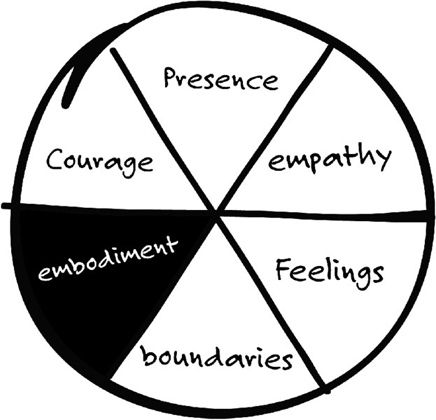Chapter 8 Embodiment

The body is incapable of not practicing. And what we practice we become.
Even as you sit here reading … you are shaping yourself by your posture, the way you’re breathing, what you’re thinking, feeling and sensing.
While this may seem subtle and far below the level of our awareness, over time this has a powerful effect on how we perceive the world and how the world perceives us.
—Richard Strozzi-Heckler (2014)
Every action we take originates in our body. Our thoughts, our words, our actions—we cannot produce an action without involving our body. It follows, then, that in order to change we need to engage our body. As Wendy Palmer (2013) so aptly writes, “The way we sit and stand can change the way we think and speak.” The goal of being an embodied coach inspires us to cultivate our ability to be present to our whole self: head, heart, and gut. A coach able to ground oneself and remain centered in the midst of difficult times and challenging engagements is equipped to manage whatever presents itself in the coaching engagement.
I freely admit I have been slower than most to experience the wisdom of my body. I was one of those who revered the mind and thought my body was just along for the journey. Today, I find enormous value in cultivating my embodied self, engaging in daily centering practices, and learning from the wisdom of my body that often far ...
Get Self as Coach, Self as Leader now with the O’Reilly learning platform.
O’Reilly members experience books, live events, courses curated by job role, and more from O’Reilly and nearly 200 top publishers.

